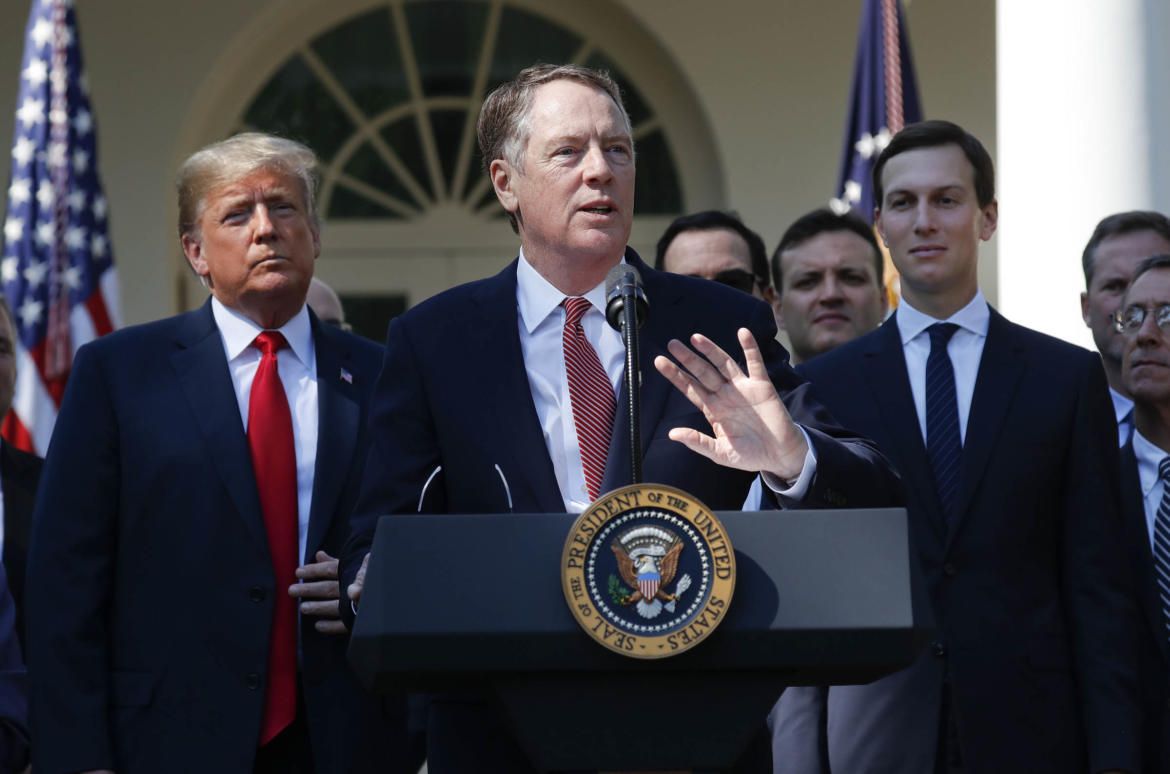US’s new Trade deals with Japan, UK & EU
October 19, 2018 | Expert Insights

The US has said it intends to negotiate three separate trade agreements with Japan, the UK and the EU as part of US President Trumps efforts to reshape trade policies to support his “America First “ agenda.
Background
President Trump election campaign relied heavily on promises of balancing global trade and returning manufacturing jobs to the US. He also criticized “bad” trade deals and “unfair trade practices” against America. He said that other countries were "dumping vast amounts of steel all over the United States, which essentially is killing our steelworkers and steel companies”.
Since taking office, Trump has withdrawn from the Trans-Pacific Partnership, and initiated the renegotiation of the North Atlantic Free Trade Agreement. In recent months, experts have begun sounding the alarm about an impending trade war between US and China, the two largest economies in the world. These fears solidified in March, when Trump announced global import tariffs of 25% on steel and 10% on aluminium. The President cited “national security” in order to circumvent WTO commitments.
Analysis
The US has said it intends to negotiate three separate trade agreements with Japan, the UK and the EU. It could take several months before the negotiations begin, it said.
The move is part of US President Donald Trump's efforts to reshape trade policies to support his "America First" agenda. It comes as the US has been fighting a trade war with China, the world's second largest economy.
"We will continue to expand U.S. trade and investment by negotiating trade agreements with Japan, the EU and the United Kingdom," US trade representative Robert Lighthizer said. "We are committed to concluding these negotiations with timely and substantive results for American workers, farmers, ranchers, and businesses."
The US plans to start negotiations with Japan, the world's third largest economy, "as soon as practicable, but no earlier than 90 days from the date of this notice," Mr Lighthizer wrote in a letter to Congress.
Negotiations with the United Kingdom will start "as soon as it is ready" after it leaves the European Union in March 2019, he said. The aim is "to address both tariff and non-tariff barriers" and to achieve free, fair and reciprocal trade" Mr Lighthizer said.
Mr Trump's preference for bilateral deals over multilateral ones is part of a more protectionist trade policy he has carried out since taking office in 2016. He pulled the US out of the Trans-Pacific Partnership deal early in his administration and has renegotiated a trade deal between the US, Canada and Mexico.
Mr Trump's trade war with China continues to escalate, with companies already feeling the pinch and experts warning it will harm global growth.
The UK, which is seeking to broaden its trading partners as it heads towards Brexit, welcomed the news.
"The UK welcomes the US Administration's confirmation that it intends to begin negotiations for a Free Trade Agreement with the UK once we have left the EU," a government spokesperson said.
While the UK is not able to negotiate trade agreements until it formally leaves the EU, a US-UK working group launched in 2017 has been preparing the ground for a potential future trade agreement.
Counterpoint
The trump administration faces a serious hurdle in negotiating new trade deals with the UK and EU as the major barrier is the steel tariffs imposed earlier this year. Brussels will be very cautious in their approach to any new negotiations and will be vary of any new tariff reduction proposals.
The situation with the UK is far more complex as it looks to exit the EU without a trade agreement in place. This complicates matters as the US will establish a fresh trade deal with London this year but will be forced to revise the deal by April 2019 to adjust for the aftermath of a messy Brexit.
Assessment
Our assessment is that Washington is trying to reduce the chronic trade imbalances by negotiating trade agreements with the UK, EU and Japan. We believe that US trade deficit has continued to grow since President Trump took office following the elections in 2016. The monthly deficit in August 2018 has reached $ 38.6 billion with China and $ 8.7 billion with Mexico, both of them are historic highs.








Comments